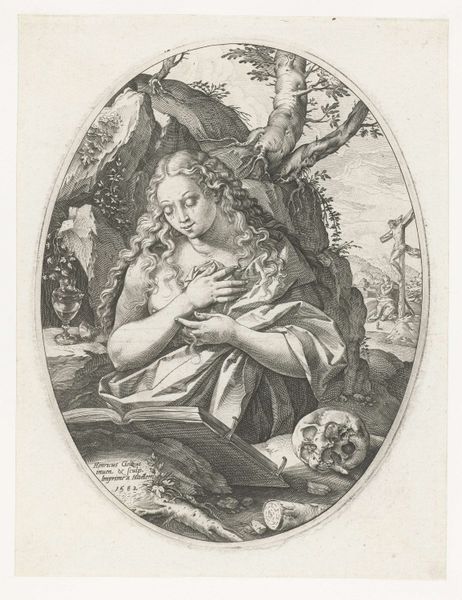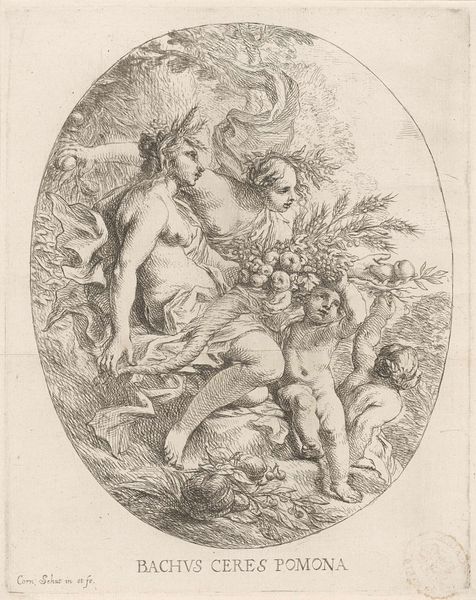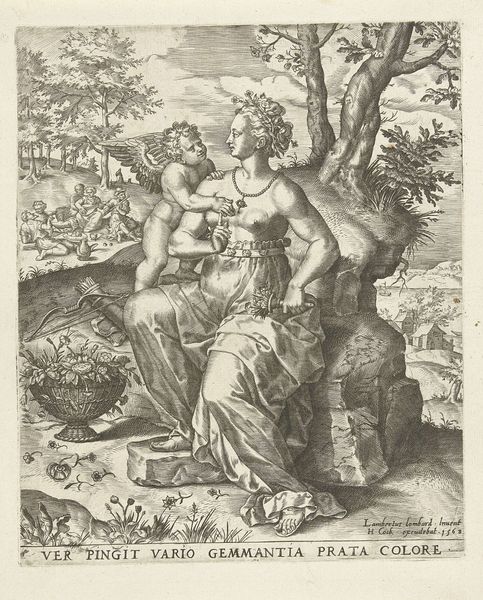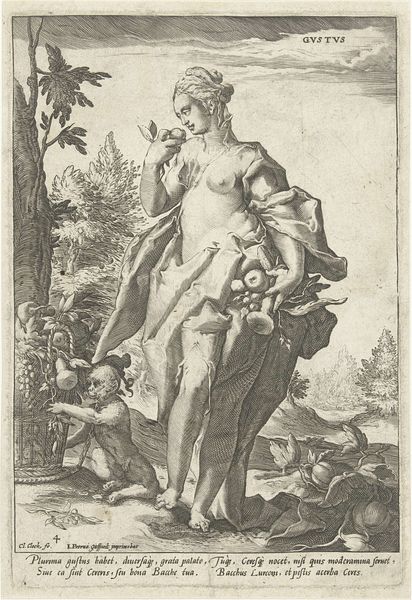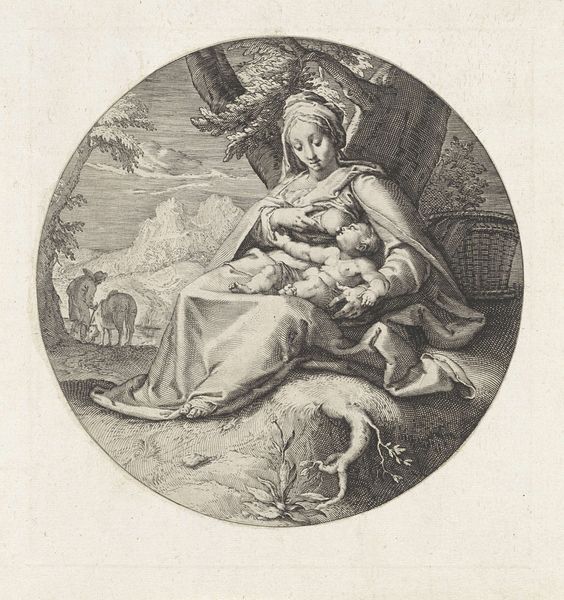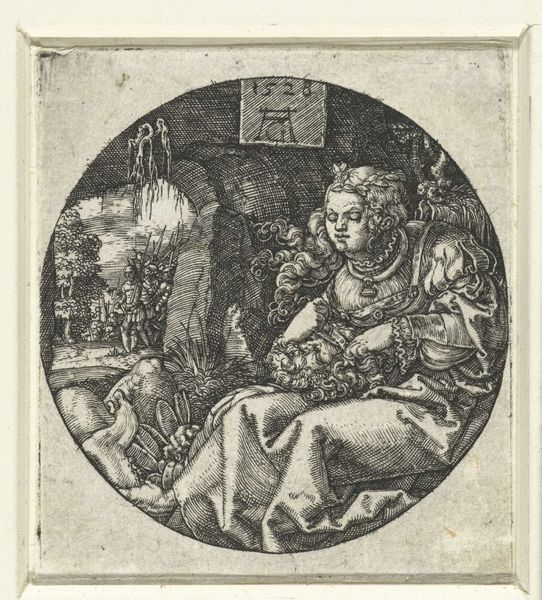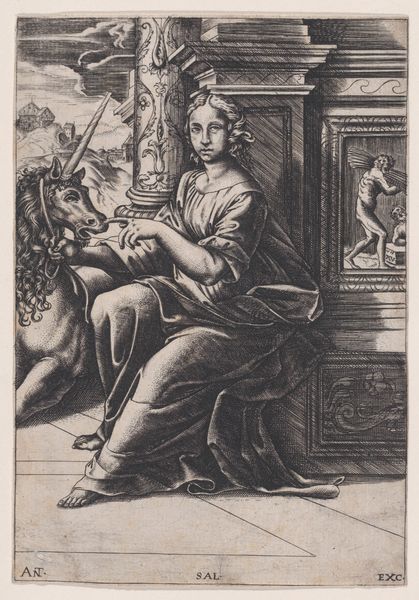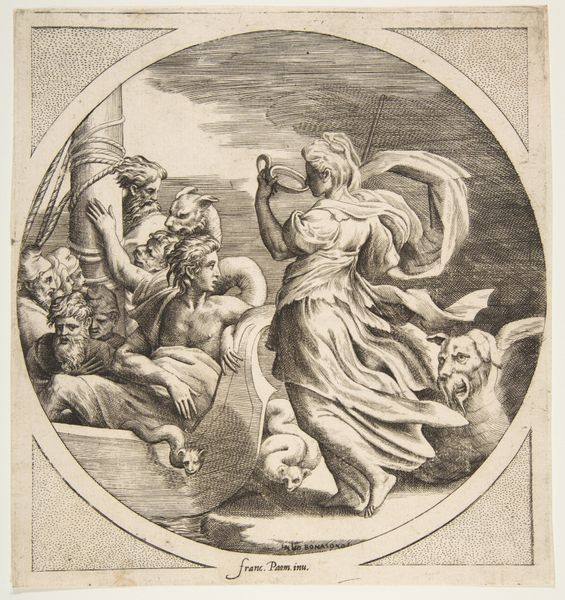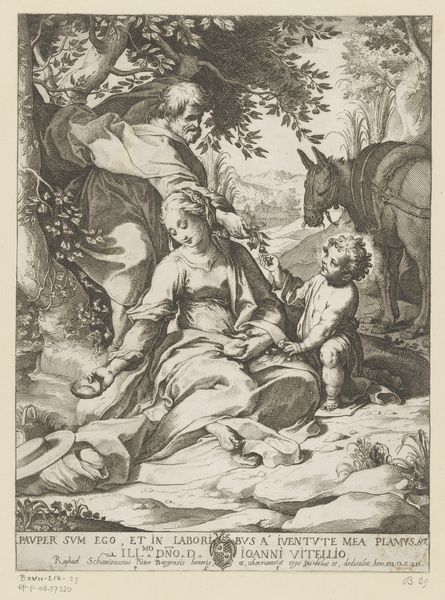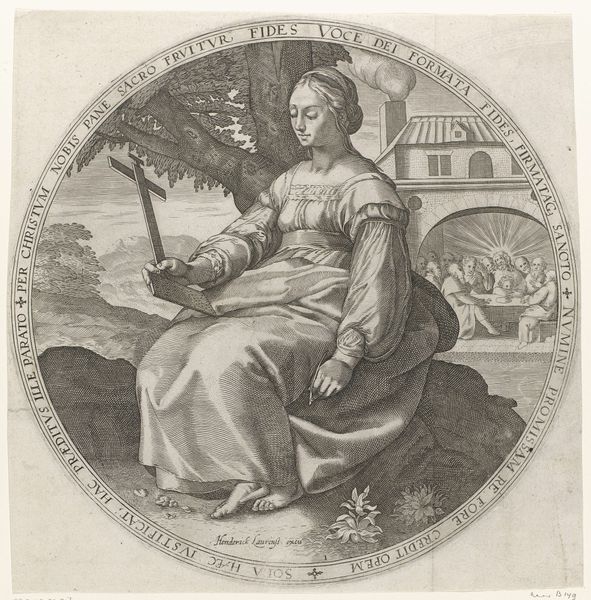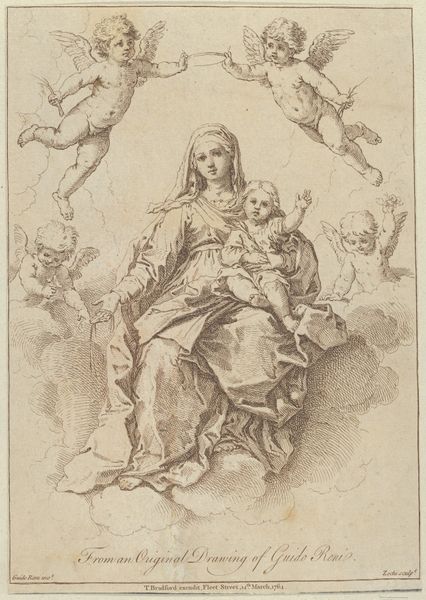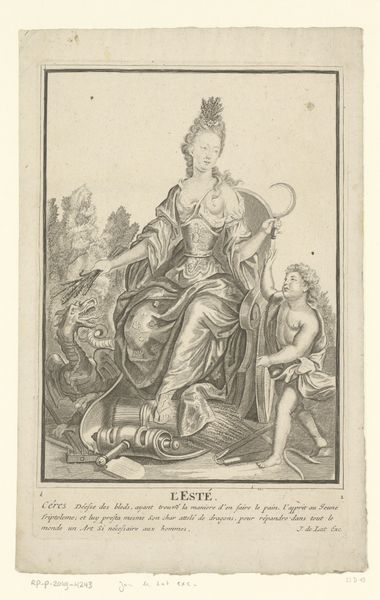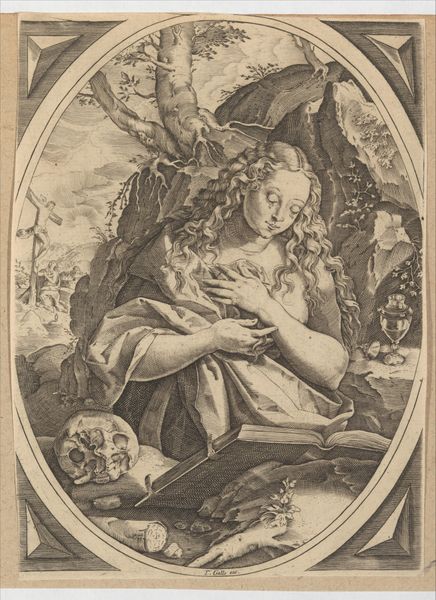
print, engraving
#
portrait
#
allegory
# print
#
old engraving style
#
11_renaissance
#
limited contrast and shading
#
portrait drawing
#
engraving
Copyright: Rijks Museum: Open Domain
Curator: This engraving, dating from between 1592 and 1635, is titled "Liefde," which translates to "Love." It's currently housed in the Rijksmuseum. The artwork presents an allegorical representation using a circular frame. Editor: It has a somber and slightly severe feel. The composition is quite complex for such a small format. The use of light and shadow seems designed to emphasize the figures' weight and solidity. What do you think? Curator: The central figure, a Madonna-like woman holding a child, anchors the piece, visually and thematically. Notice the subtle yet pervasive contrasts. The joyous music-making child versus the somber scene of Christ’s crucifixion... the abundance of love in one part, death and sorrow in another. Editor: Absolutely, these children act as distinct, symbolic markers of life's dualities. We see Cupid-like figures actively engaged; one piping music, another perhaps seeking connection. How do they interact with the woman, this central mother figure? Curator: The interplay is powerful. She’s both earthly mother and divine symbol of charity, linked visually by gestures—she almost acts as a bridge between mortality, embodied by the cherubic figures and divine suffering portrayed behind her, up towards the crucifixion. Editor: And the inscription that encircles the image, what can you tell me about it? The symbolism is strong in this work. I wonder how contemporary audiences received this blending of iconography. Curator: The circular inscription offers clues: "Through the death of Christ, Charity/Love creates Salvation." So here, the allegorical representation links love, sacrifice, and salvation explicitly. A very popular, indeed critical idea during the Renaissance when religious iconography dominated visual culture. The tension of fierce death and yet also vibrant life, the Latin texts invite further intellectual inspection for period audiences. Editor: This piece encapsulates such profound historical narratives through visual symbol, that the visual rendering offers viewers the means to understand something about this moment in history in relation to continuity. I like that contrast. Curator: I completely agree; the symbolic framework in this allegorical engraving urges a re-evaluation of love, faith and sacrifice beyond the surface level. It remains a powerful testament of societal expectations. Editor: Indeed, and the conversation that this engraving sets off can teach us a lot today, thank you.
Comments
No comments
Be the first to comment and join the conversation on the ultimate creative platform.
